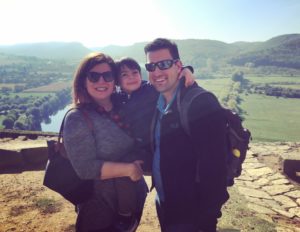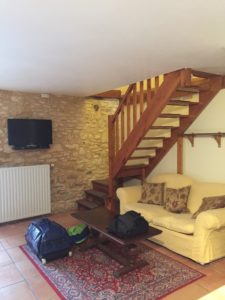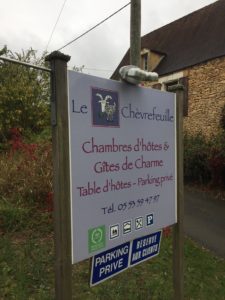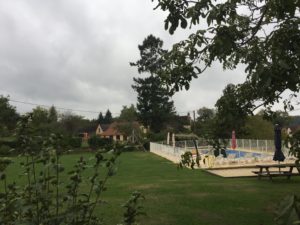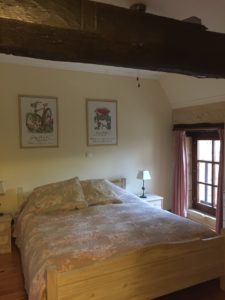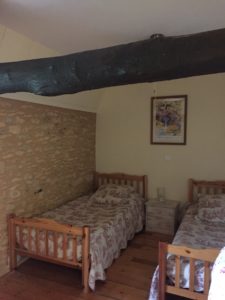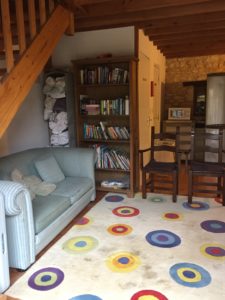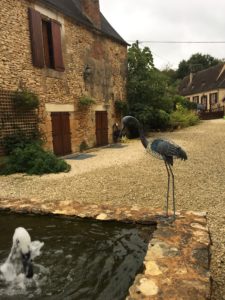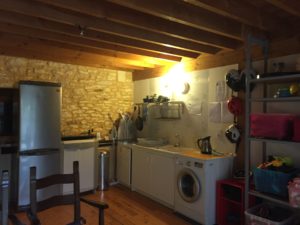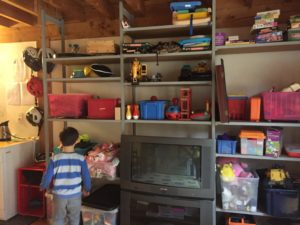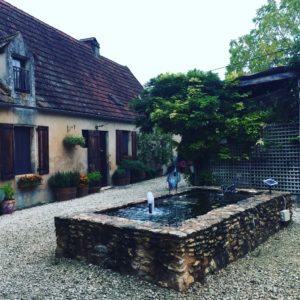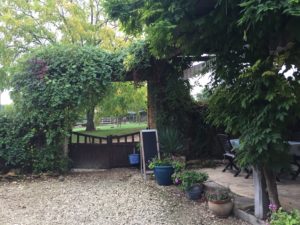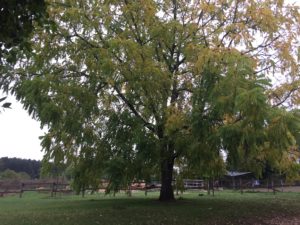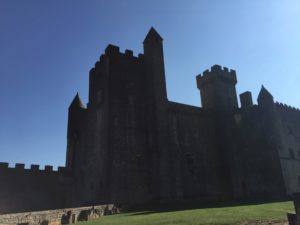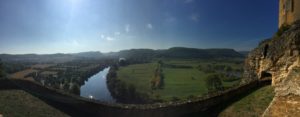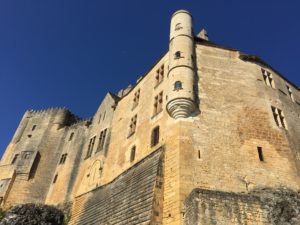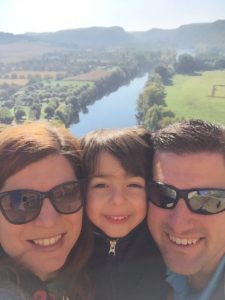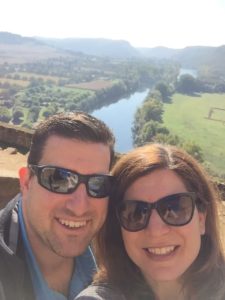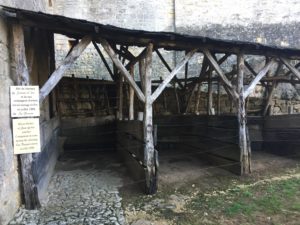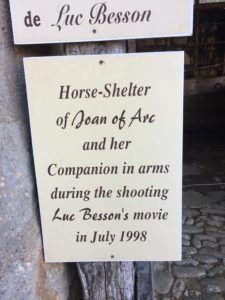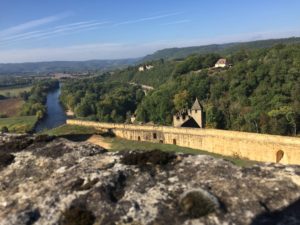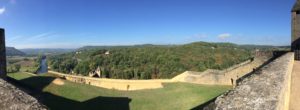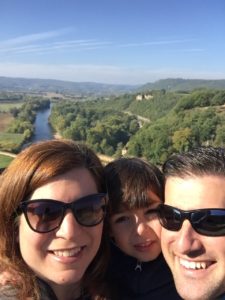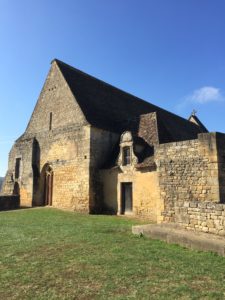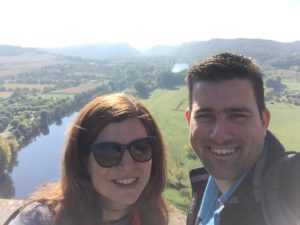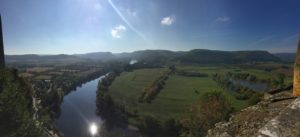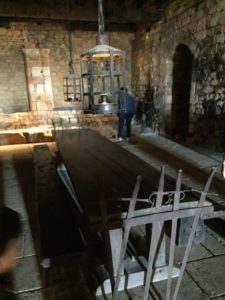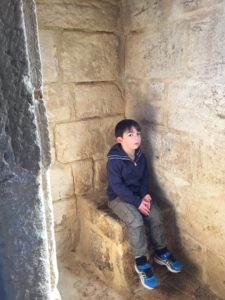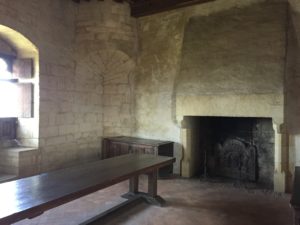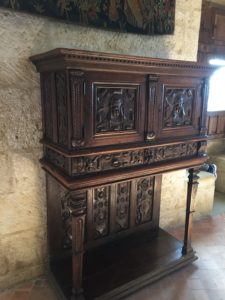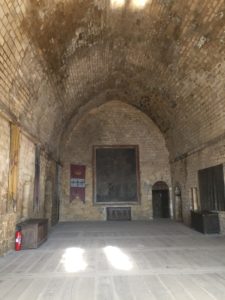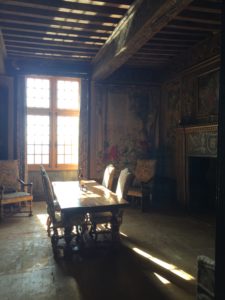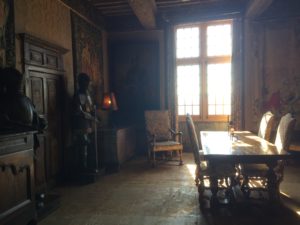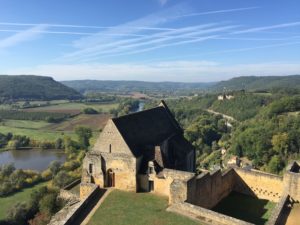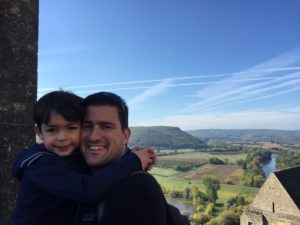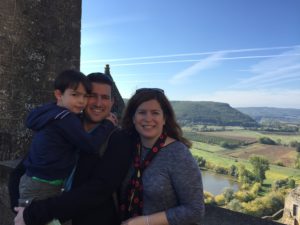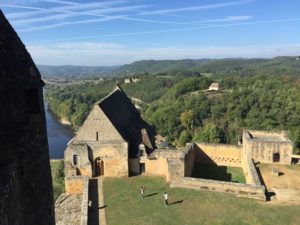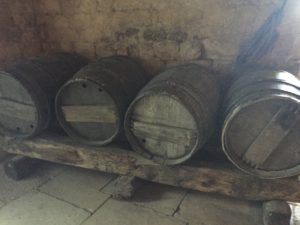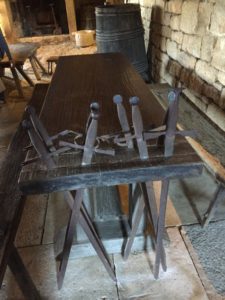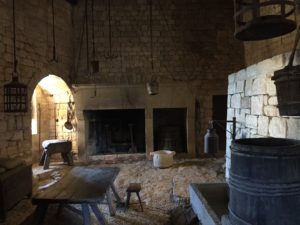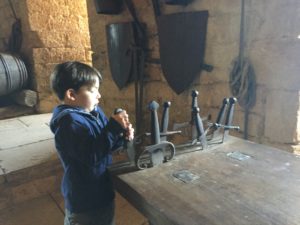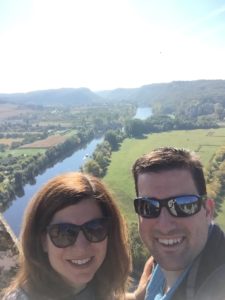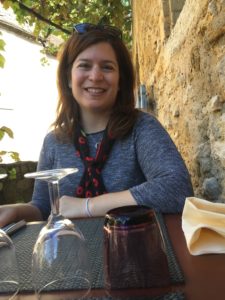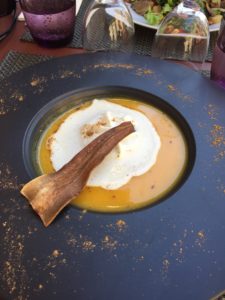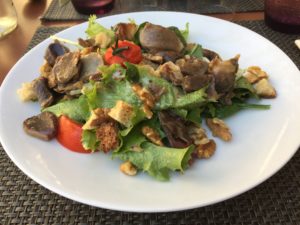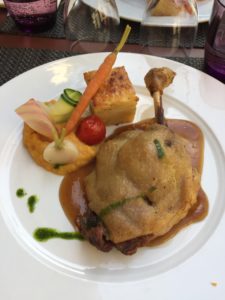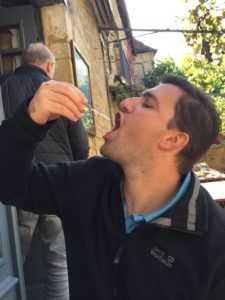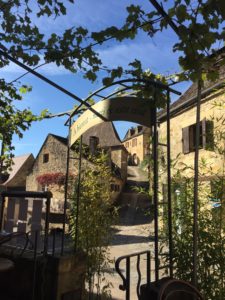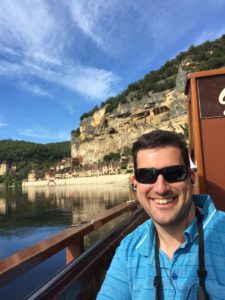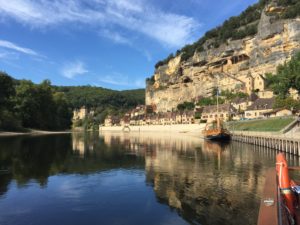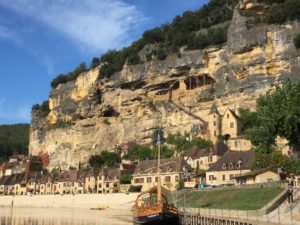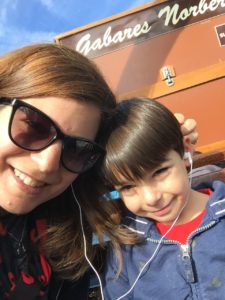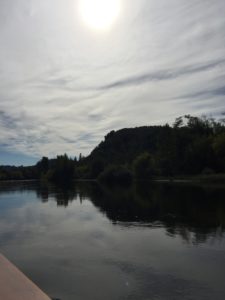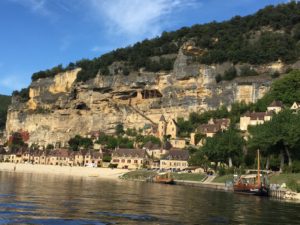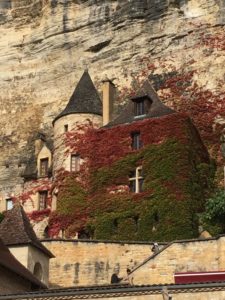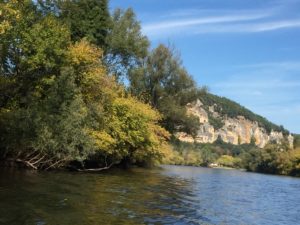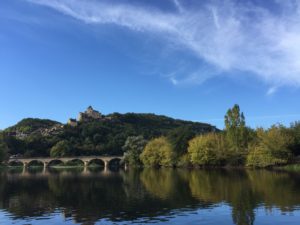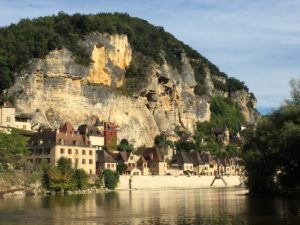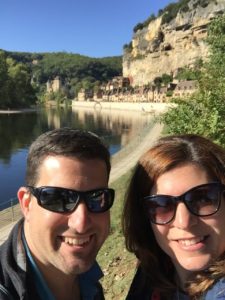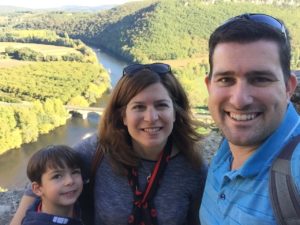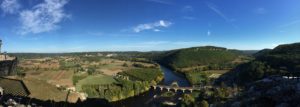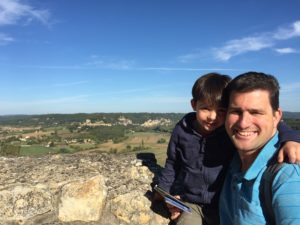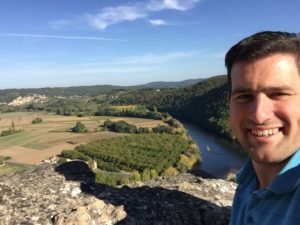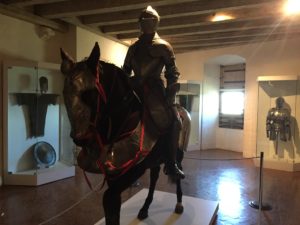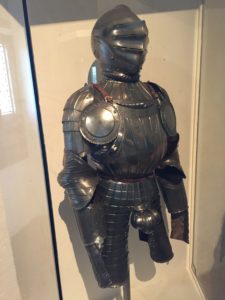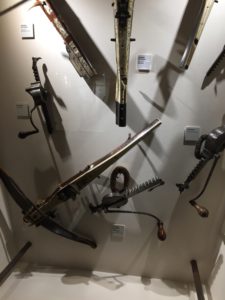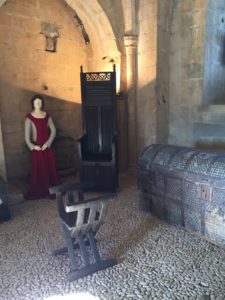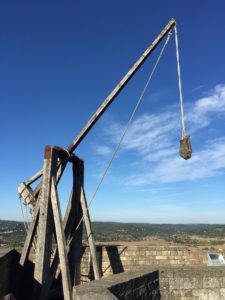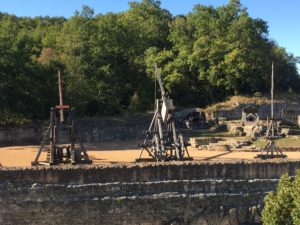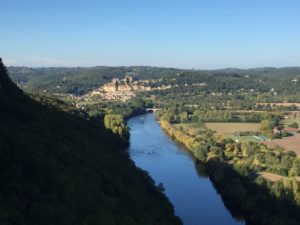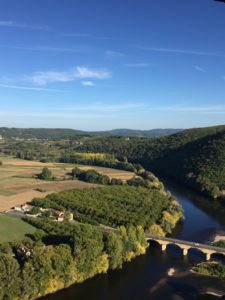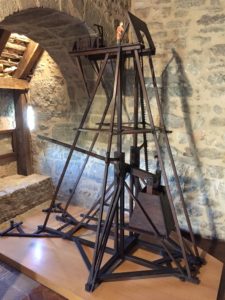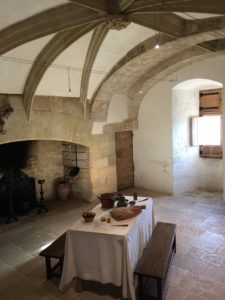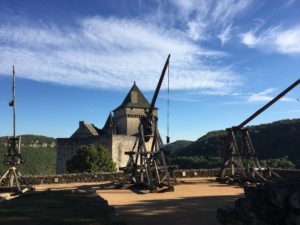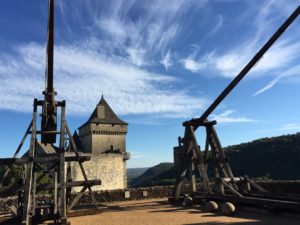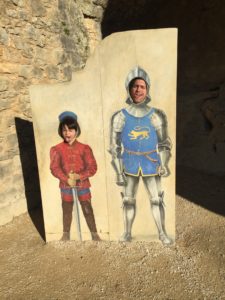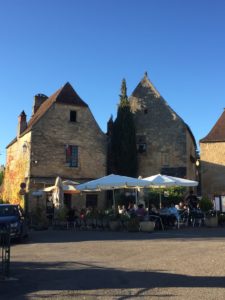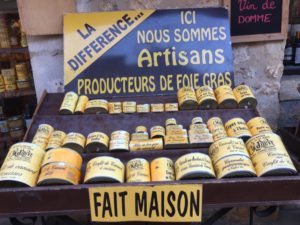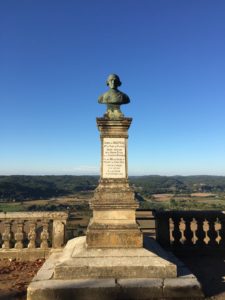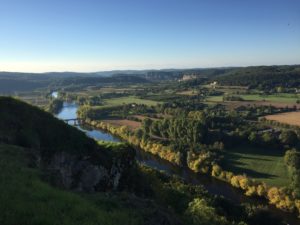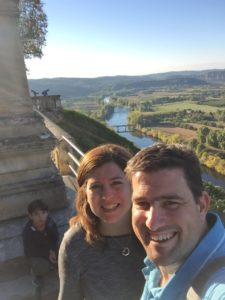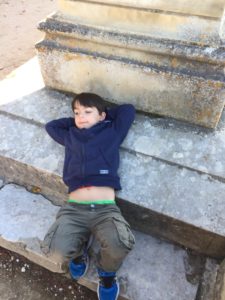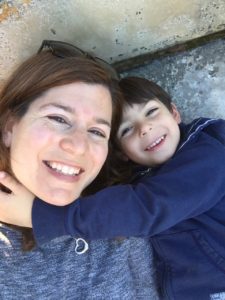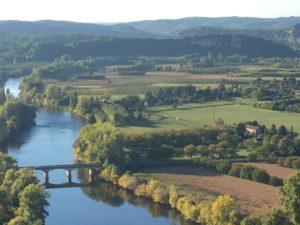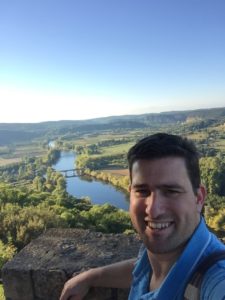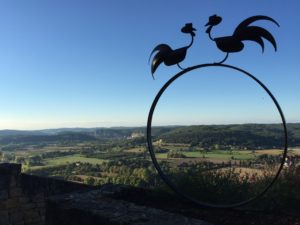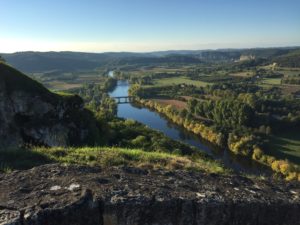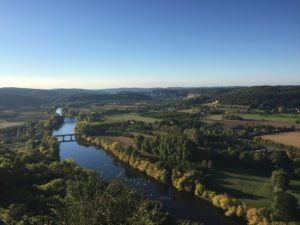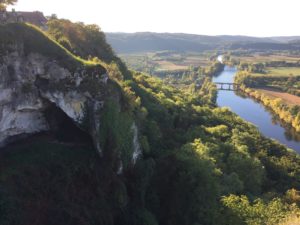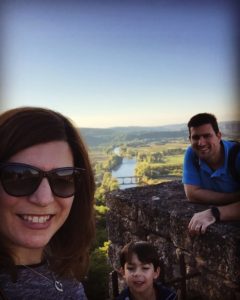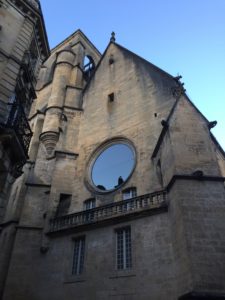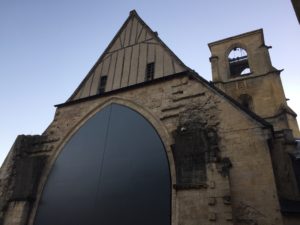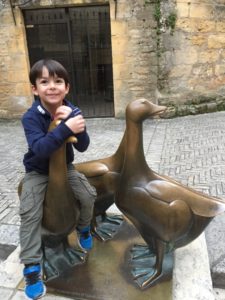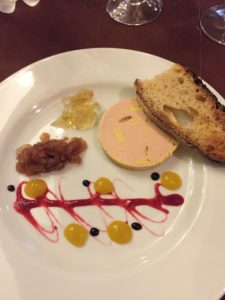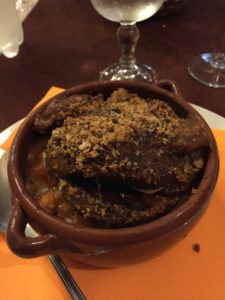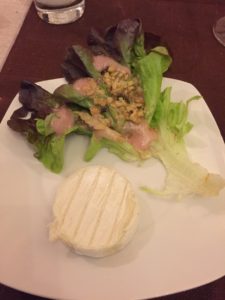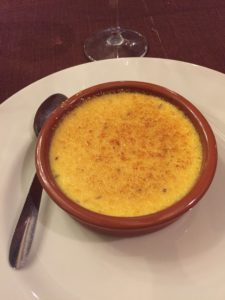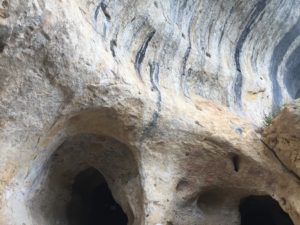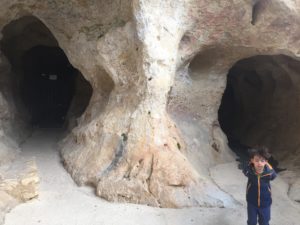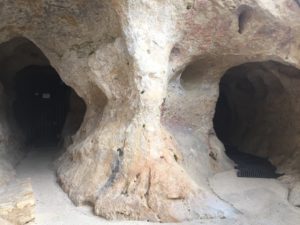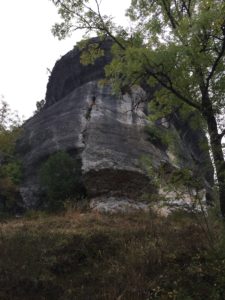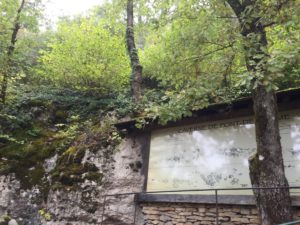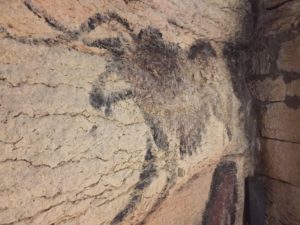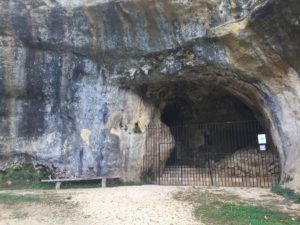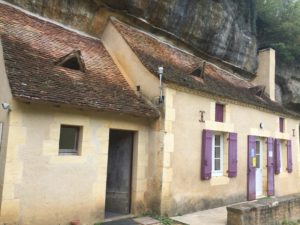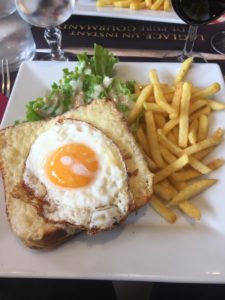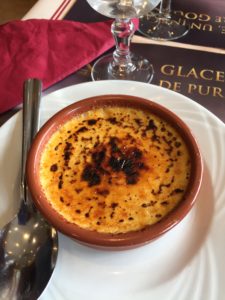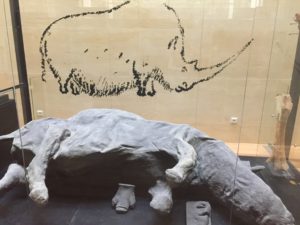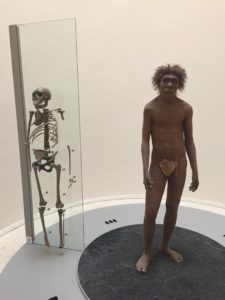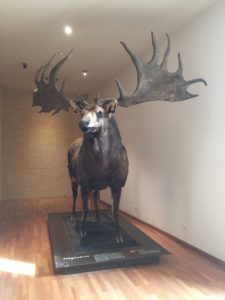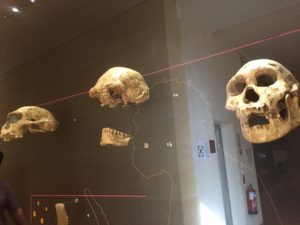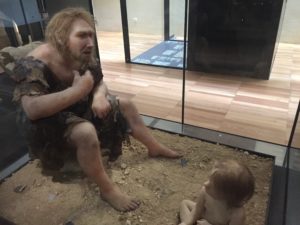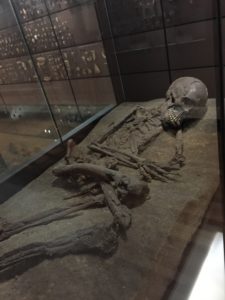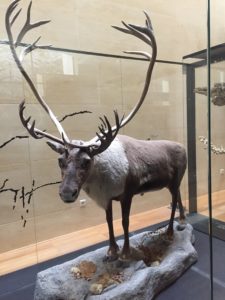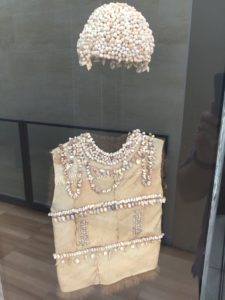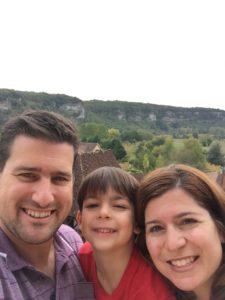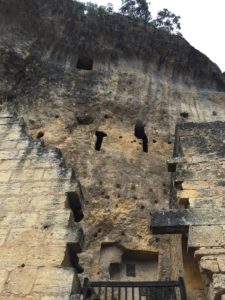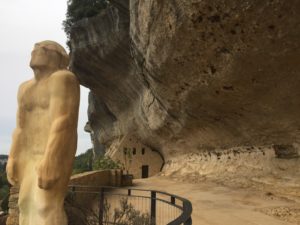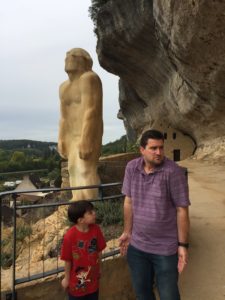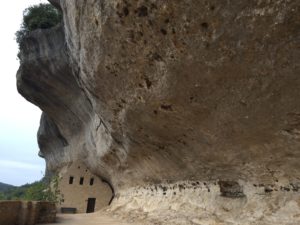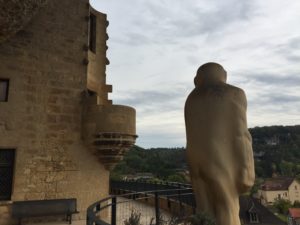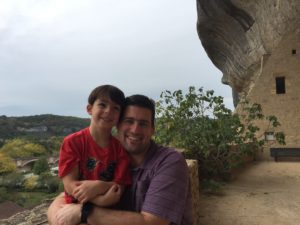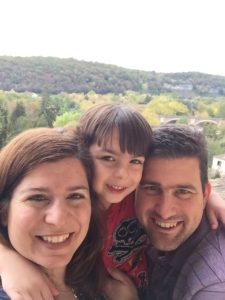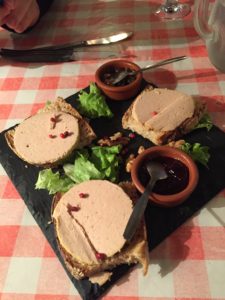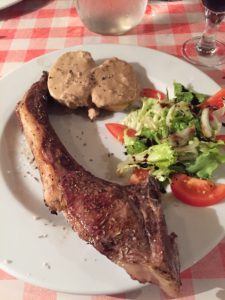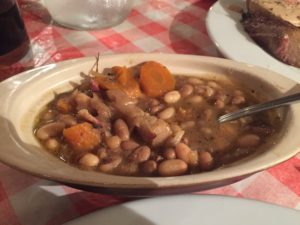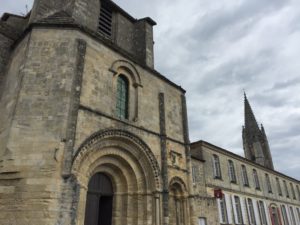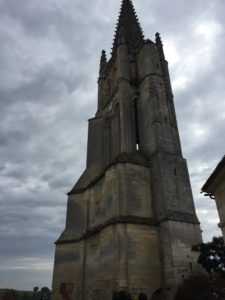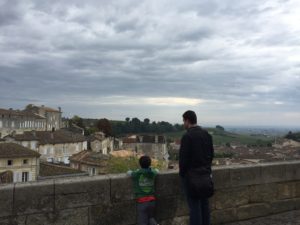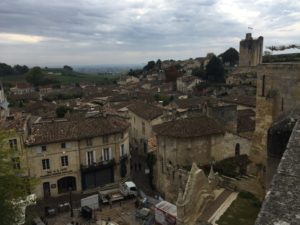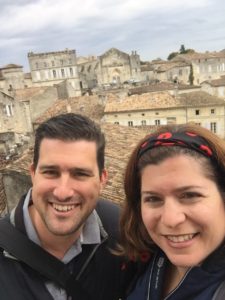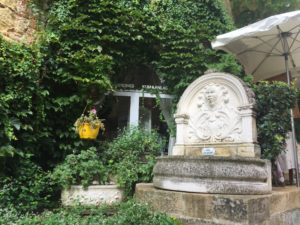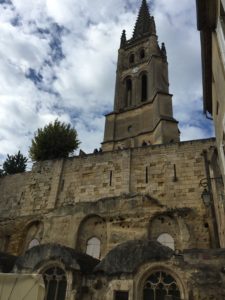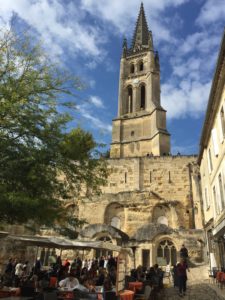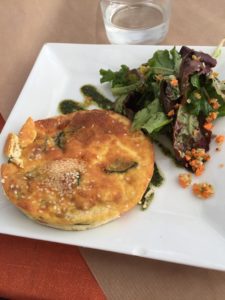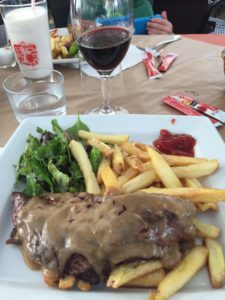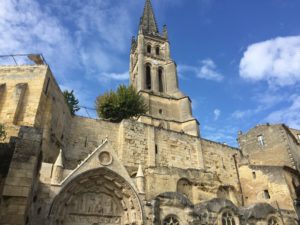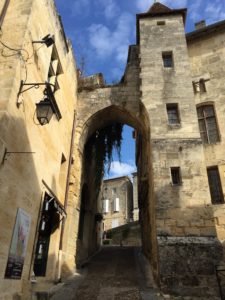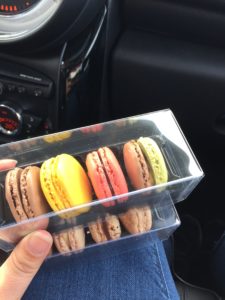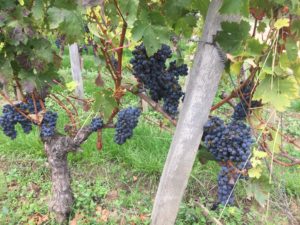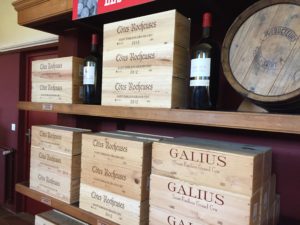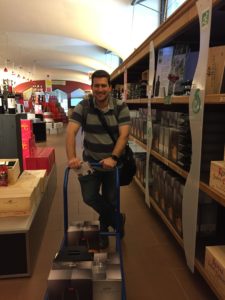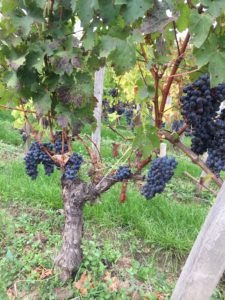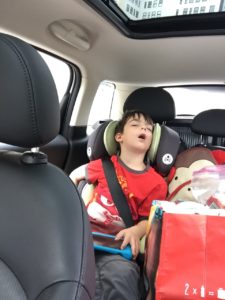10,000 Years in the Cave of Wonders
Last October, we combined a work trip to Bordeaux with a stop in the Burgundy and Dordogne regions of France. My idea of a good week is eating pastries, foie gras, duck and cheese and seeing cave art that was literally painted ten thousand years ago. Oh and a few outstanding towns and castles to top it off!
We split our time between two weekends, with the weekdays left open for the work portion of the trip. We also decided to drive, even though it’s a good ten hours from Germany because both of these regions are really better by car. We split the drive up, and on the first night we drove about 5 hours and spent the night in an apartment hotel in a random french town, arriving the next day in the village of St. Cyprien, in a farmhouse B&B called Le Chevrefeuille.
Since it was late October, the breakfast part of the B&B was no longer offered, and the main building was closed, and they were only renting out their apartments. This suited our needs, as we like to have an apartment vs, just a room we share with our 6 year old. The Farmhouse was outstanding! The owners are British and have lived in France for over ten years. We stayed in the Passiflore two bedroom apartment.
During high season (Summer), they offer cooking classes and they have a pool and other outdoor activities, and I can see spending a week here as your homebase. The apartments are beautiful, with stone walls and a small upgraded kitchen. The owner asked us for a shopping list before we arrived and it was all waiting for us in our kitchen (but she did provide us with a shopping bill-it’s not included). They also have a children’s play room that has boxes of toys and games, and our child was quite entertained by this room. Nothing better than new toys!!
We had three goals in Dordogne, to see the ancient prehistoric caves, visit gorgeous castles and scenery and to eat fancy french food. Our first stop was a castle, the Chateau of Beynac.
Beynac sits atop a hill (don’t all castles?), with outstanding views of the region. Picture rolling hills and rivers and the Castlenaud Castle in the distance. It was built in the 12th Century on a sheer cliff and as is typical of this region, this castle was a focus point of the Hundred Years War between France and England. Beynac was in French hands and Castlenaud was held by the English. This castle has also been used for filming movies such as Chocolat, a Joan of Arc movie and various other French films. We spent about an hour walking the Castle before heading into town to find lunch.
We learned something on this trip, kids meals in France are very fancy. Don’t expect chicken nuggets and fries, expect smaller portions of duck and, steak and potatoes. We chose a quiet little place with an outdoor patio and had pumpkin soup and duck. Nathan ate the soup, mostly, and we didn’t order him a whole meal, as it’s hard to justify 15 euros for a kids meal for food he won’t eat!!
After lunch we drove down by the river and took a little 35 minute river cruise to see Castlenaud Castle and the other beautiful river towns along the way.
Wanting to see Castlenaud up close, we took a drive over there after the cruise to tour the castle firsthand. This castle had more inside-a museum of weaponry and warfare from the medieval times, trebuchets, and a full kitchen. You also get another amazing panoramic view of the Dordogne.
We stopped at another village, Domme, with gorgeous views before ending our evening in Sarlat for dinner. I wished we could have spent more time in Sarlat, it looked like a city with a lot to offer. It’s definitely the place to stay if you don’t have a car, as it’d an actual city and not a village. We basically ate dinner there and left, but we saw the town center and got a feel for its beauty as well.
Sarlat
But the heart of this trip for us was the caves. We wanted to see caves, but we were a little worried as to how Nathan would do in a small space where you can’t touch the walls and have to quietly listen within a small group. He isn’t a baby, but he is only 6 and sometimes six year olds don’t listen, especially six year old rambunctious boys.
Our six year old shocked us. Not only was he quiet and well behaved, and did not touch the cave walls, he was curious, interested, and asked questions! He still talks about those caves, so if you are nervous to take small children, I would say give it a try-you never know what will interest your kid.
These prehistoric caves are nothing short of being a wonder of the world. The cave art is estimated to have been drawn between 18,000 to 10,000 BC when the Magdalenians were driven south by the Second Ice age. It’s hard to wrap my brain around the fact that these people were around for 8 millennia, and just for comparison, Rome lasted one thousand years.
These people painted animals they hunted (bison, deer, ibex, mammoths, bears and wolves), and some designs we would call doodles and even naked women. These paintings were enormous tasks, as they had to do it with crude candles, as these caves were almost always dark and cold, mostly laying down or on their knees, or super high up, so they were on ladders I suppose, using flint blades and using the rock’s contours for drawing the lines of the animals. The paint used was from natural pigments dissolved in water or oil and at one cave they found over 150 minerals used for the oil.
We chose two caves to visit, the first was Grotte de Font de Gaume. The key is to arrive early, as there are only 96 spots per day and they are given out in the morning. In the summer, it’s recommended to get there at 7:30, but we were there in late October so we arrived at 9 with no issues, although the English tours are limited and there was a line when we got there.
Sidenote: We overslept but the cave was only 5 minutes from the hotel, but your whole party has to be present to get the tickets, so we dragged Nathan in his pajamas to get the tickets, hoping our timed slot would be later so we could take him home and feed him and change him! We had about an hour between getting our tickets and the tour, so it worked out.
Unfortunately, no pictures are allowed inside the cave, but it was truly a wonder to see the red and black giant bison engraved permanently inside these caves for the world to discover. A look into 20,000 years of history cannot be put into words. The tour was a little under an hour, our guide used a laser pointer to illuminate the paintings in the darkness, we were a small group but the area was large enough for all of us to fit inside, and I don’t think claustrophobics have any cause for concern here.
Outside of the cave:
The second cave we visited after lunch, we bought both tickets at the first cave that morning (we were unaware we could do this until we were at the ticket counter). This cave, Grotte de Combarelles, was a little different than the first cave. It’s described as being much more closed in, only 6 people allowed at a time, so my husband was nervous for his claustrophobia. There was nothing to be worried about, the guide had a flashlight, the cave had high ceilings but narrow passageways, but he never felt trapped.
Outside of second cave:
This cave was more about the engravings and way less paintings, so you really need to guide to use his flashlight and laser to trace the carvings and bring them to life. I could basically see all of them, there were bears, bison, mammoths and ibex amongst just a few of the 800 carvings found. Even though it was harder to see, I found this cave even more amazing because they could actually find these carvings-they seem so subtle at first and then so obvious! Its most famous carving is the “drinking reindeer” with its head down, as if it’s drinking water from a waterfall, and it has amazing detail such as antlers and genitalia. I was once again, in awe of such ancient delicate artwork.
Both of these caves are located close to the village of Les Eyzies de Tayac, where the national museum of prehistory is located. After the caves, we headed into the museum, a great supplement to enrich your knowledge of life of the cro-magnon.
Lunch first:
One of the coolest things we saw was an ancient Rhino that was found in perma-frost, and they have the whole animal on display, almost in perfect condition.
The museum is located inside a cliff, and looks like a cave from the outside.
That night we ate more duck and foie gras and soup-the main staples of a Dordogne diet it seems. A small note on foie gras: I don’t eat veal because I think starving baby cows in cages is cruel, and I though geese were stuffed to the point of cruelty as well, so I wasn’t going to eat any of it. But I read that geese do not have a gag reflex and have massive gullets and expandable livers, in other words, they are in no pain and live a calm life. They are slaughtered the same way as cows and pigs and I am not a vegetarian, so I decided it would be ok to try it-I did and it was delicious. It’s a delicacy from this region specifically, so I am not sure I would eat it anywhere, and I would not eat it from the cans they sell it in, but I liked it at the places we tried it and I would eat it again in this region (only).
The next day we checked out of our hotel and we headed towards Bordeaux, with a quick stop for lunch and wine in St. Emilion. This town is just adorable. It’s the only way to describe it’s stone buildings and cobblestoned roads. We have become wine junkies since living in the wine region of Germany, so we try to buy wine whenever we go to a region where wine is its specialty. St Emilion was no exception to this rule! We had a great little lunch, walked the cute town and stopped at a wine co op for a tasting before heading out. This was a perfect stop for a few hours as there isn’t much to do here, but it’s lovely to look at and just stop and enjoy a French village.
We ended this portion of our trip in Bordeaux, and I will continue this blog in Part two when we leave work and head back towards Germany with a weekend stay in Burgundy-more wine and more beautiful scenery! Stay Tuned!
